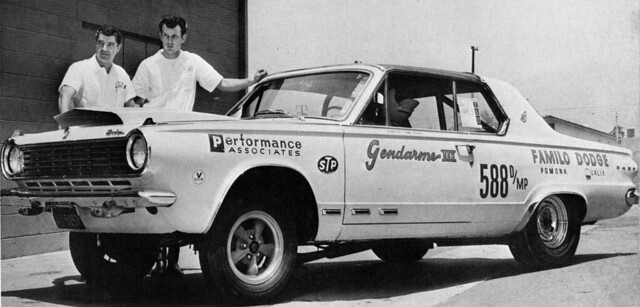moper
Well-Known Member
It's about materials costs. If you had a $2 stamping (cost) and needed it on 500,000 cars that' a $1M hit for those. Not to mention production steps, and replacement peices made for repairs.

It's about materials costs. If you had a $2 stamping (cost) and needed it on 500,000 cars that' a $1M hit for those. Not to mention production steps, and replacement peices made for repairs.
Grassy,
Ron Root, a factory-backed Drag Racer who routinely ran in Modified/Production.
This 'D/MP' Dart weighed in approximately +125 lbs. heavier than a typical factory line Dart.
And yet my 67 383 has torque boxes front and rear. Mine is a 4spd, wonder if this is the difference.
No. Just because something is made in mass, it doesn't dictate that it is made shittly... why do you think today , with their cheap, mass produced cars did the jap cars blow the doors off the american cars late 70s and beyond...and the big three haven't caught up ? And Chrysler, of all companies was bought by fiat .. Fiat ?? ..fix it again tony.. ?
hate to say this...i agree with you...but if you have taken one of these cars apart you can tell they (the workers) didn't give a ****.. just look at the neatness of the welds..the quality of fit...no, these cars were just slapped to together.. especially when you compare them to other cars of that era.. and they handled like **** as well...
But we love our car anyway...
...
I also had a '71 MG that I rebuilt The welds were beautiful...who ever worked on that car had pride..
We can go on..stripes being put on the cars ..the left side being different than the right..whomever installed the floor panels on my car couldn't be bothered to get it right because they left a triangular hole...who do I blame for this ? The accounts receivable clerk ?
Not sure if you lived through that era but it is probably the biggest reason that the jap cars got a hold in North America...
You have to go back in time and put this in perspective. The US makers were making money. They didn't HAVE to step up quality.
quick answer
...they were not necessary for the intended use of those cars.
Blame it on Nash, they started this unibody crap back in the 40's.
It couldn't possibly have cost much money to extend the unibody reinforcement a couple feet. Is there a reason that they opted not to? It seems insane.
Is there anyone out there (other than those restoring a car to factory specs) who thinks that welding in subframe connectors is a bad idea?
Hey, I like uni bodies...drove one that was built in '59 and it was toted to be well ahead of the future..had syncro in first as wellI think being a uni body that it also makes the sills of the car non structural..have to ask an engineer about that..
